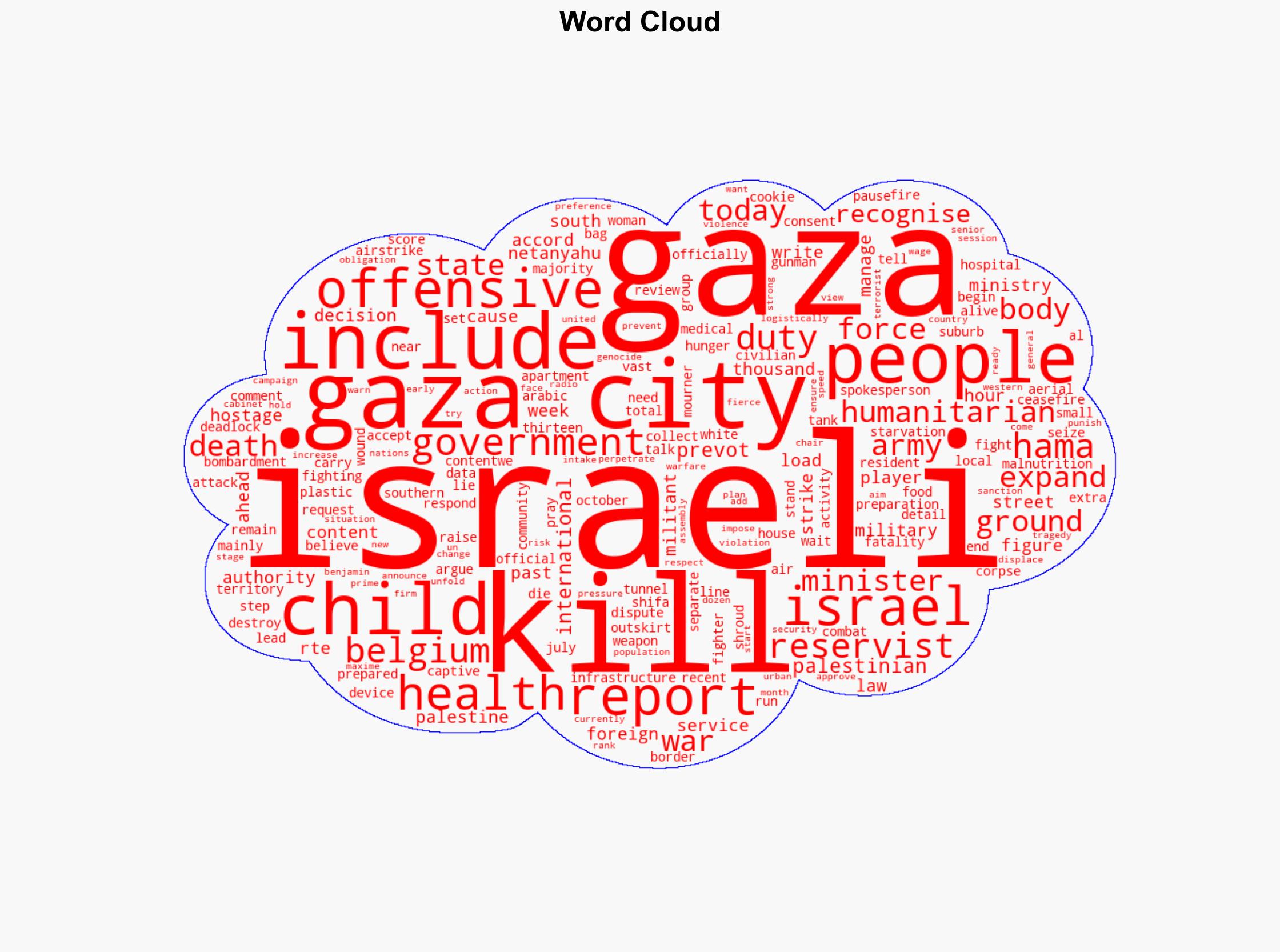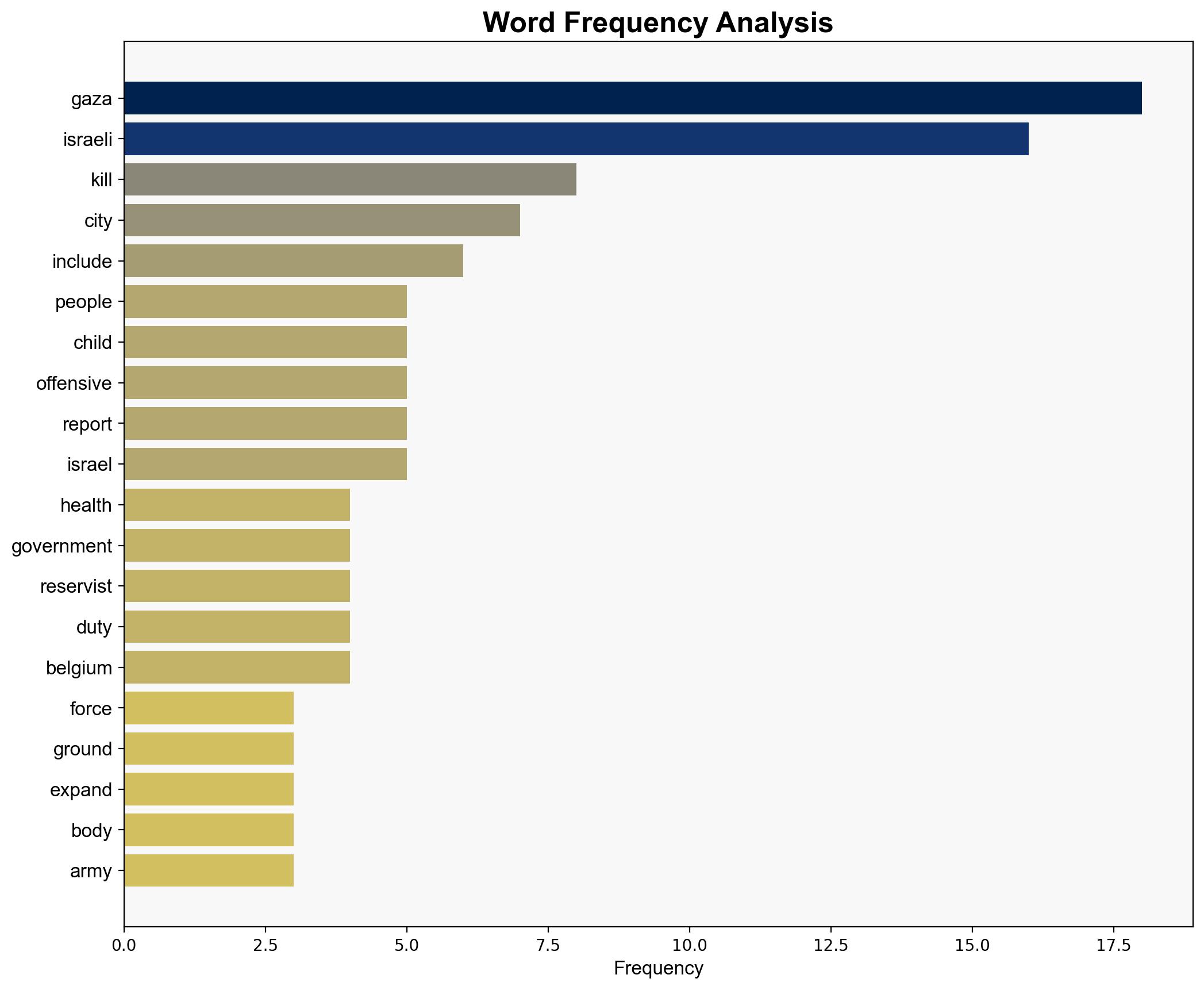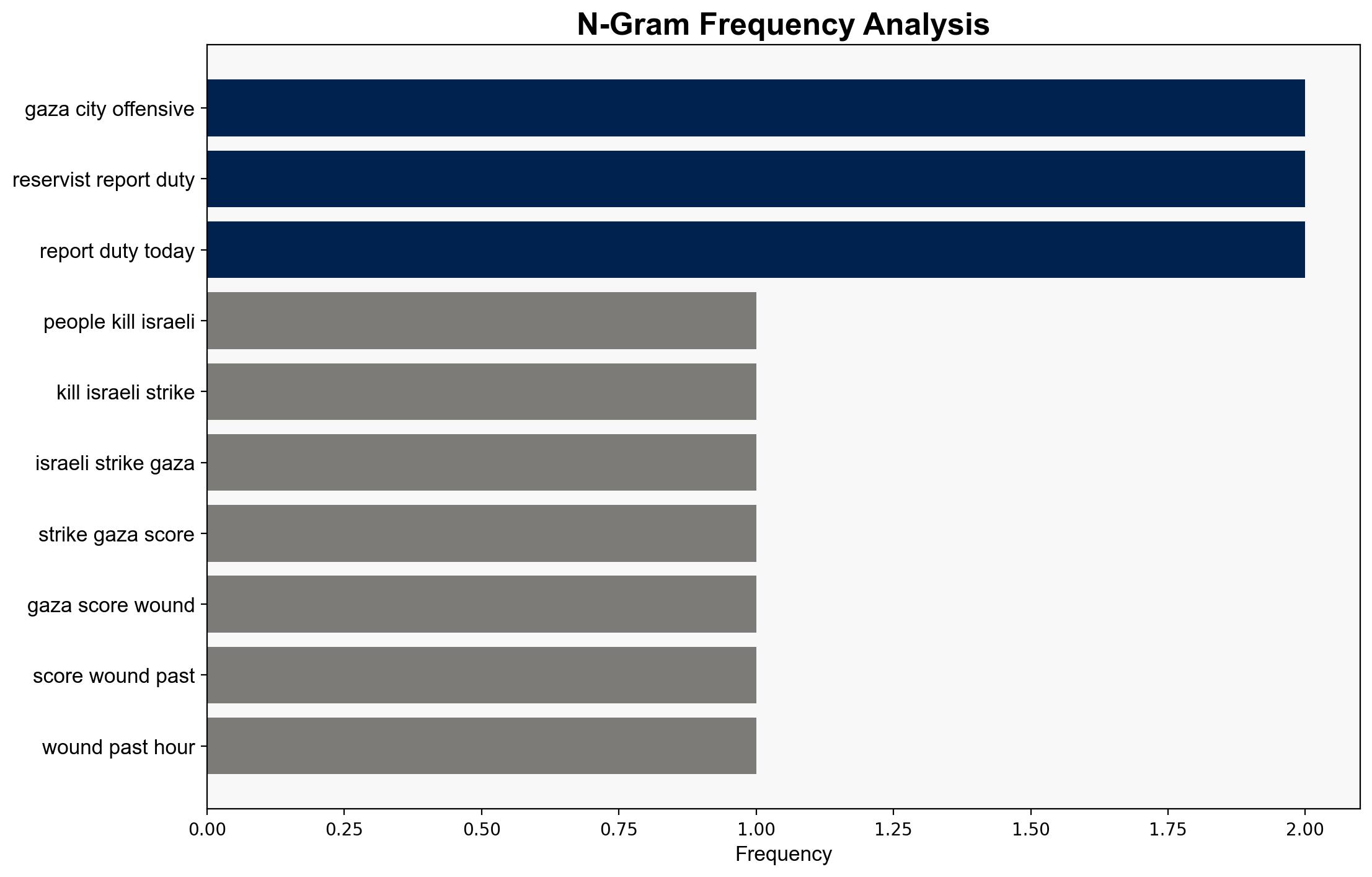Israeli strikes kill 13 people in Gaza City medics say – RTE
Published on: 2025-09-02
Intelligence Report: Israeli Strikes Kill 13 People in Gaza City – RTE
1. BLUF (Bottom Line Up Front)
The most supported hypothesis is that Israeli military actions are part of a strategic escalation to weaken Hamas infrastructure in Gaza. Confidence in this assessment is moderate due to conflicting reports on civilian casualties and humanitarian conditions. Recommended actions include diplomatic engagement to de-escalate tensions and humanitarian aid coordination.
2. Competing Hypotheses
1. **Hypothesis A**: The Israeli strikes are a calculated military strategy aimed at degrading Hamas’ military capabilities and infrastructure in Gaza City. This includes targeting tunnels, weapon caches, and militant positions to prevent future attacks on Israel.
2. **Hypothesis B**: The strikes are primarily a response to immediate threats and are not part of a broader strategic plan, but rather a reaction to recent escalations and provocations by Hamas, including hostage situations and attacks on Israeli civilians.
Using the Analysis of Competing Hypotheses (ACH) 2.0, Hypothesis A is better supported due to the systematic nature of the strikes and the preparation for a larger offensive, as indicated by the mobilization of Israeli reservists and the approval of expanded military campaigns by Israeli leadership.
3. Key Assumptions and Red Flags
– **Assumptions**: It is assumed that Israeli military objectives are clearly defined and communicated internally, and that civilian casualties are collateral rather than intentional.
– **Red Flags**: Discrepancies in casualty figures and reports of malnutrition and starvation suggest potential underreporting or misrepresentation of humanitarian impacts. The lack of Israeli military comment on specific operations raises questions about transparency.
– **Blind Spots**: Limited insight into Hamas’ strategic response and potential international diplomatic maneuvers could affect the situation’s trajectory.
4. Implications and Strategic Risks
– **Escalation**: Continued military actions could lead to broader regional conflict, drawing in neighboring countries or non-state actors.
– **Humanitarian Crisis**: The potential for a severe humanitarian crisis in Gaza could increase international pressure on Israel and impact its diplomatic relations.
– **Geopolitical**: Belgium’s recognition of Palestine and calls for sanctions highlight growing international scrutiny and potential shifts in alliances.
– **Psychological**: Prolonged conflict may exacerbate psychological trauma among civilian populations, affecting long-term stability.
5. Recommendations and Outlook
- Engage in diplomatic channels to facilitate ceasefire negotiations and reduce immediate tensions.
- Coordinate with international organizations to provide humanitarian aid and address civilian needs in Gaza.
- Scenario Projections:
- **Best Case**: Successful ceasefire and initiation of peace talks.
- **Worst Case**: Escalation into a broader regional conflict.
- **Most Likely**: Prolonged military engagement with intermittent ceasefire attempts.
6. Key Individuals and Entities
– Benjamin Netanyahu: Israeli Prime Minister, key decision-maker in military strategy.
– Maxime Prévot: Belgian Foreign Minister, advocating for recognition of Palestine and sanctions on Israel.
7. Thematic Tags
national security threats, humanitarian crisis, regional conflict, international diplomacy




